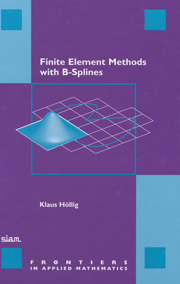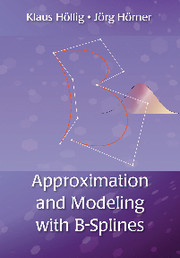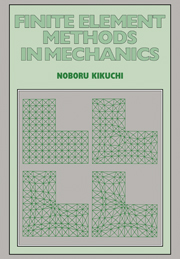Finite Element Methods with B-Splines
The finite element method (FEM) has become the most widely accepted general-purpose technique for numerical simulations in engineering and applied mathematics. Principal applications arise in continuum mechanics, fluid flow, thermodynamics and field theory. In these areas, computational methods are essential and benefit strongly from the enormous advances in computer technology. B-splines play an important role in approximation and geometric modeling. They are used in data fitting, computer-aided design (CAD), automated manufacturing (CAM) and computer graphics. Finite Element Methods with B-Splines describes new weighted approximation techniques, combining the computational advantages of B-splines and standard finite elements. In particular, no grid generation is necessary, which eliminates a difficult and often time-consuming preprocessing step. The meshless methods are very efficient and yield highly accurate solutions with relatively few parameters. This is illustrated for typical boundary value problems in fluid flow, heat conduction and elasticity.
- Self-contained, including explanation of the basic theory, making it easily accessible to graduate students in mathematics, engineering and computer sciences
- The requisite facts on functional analysis and partial differential equations are included in an appendix
- The new concepts will be of interest to academic researchers and scientists in industry who are developing finite element software
Product details
December 2012Paperback
9780898716993
156 pages
254 × 178 × 8 mm
0.29kg
This item is not supplied by Cambridge University Press in your region. Please contact Soc for Industrial & Applied Mathematics for availability.
Table of Contents
- Preface
- 1. Introduction
- 2. Basic finite element concepts
- 3. B-splines
- 4. Finite element bases
- 5. Approximation with weighted splines
- 6. Boundary value problems
- 7. Multigrid methods
- 8. Implementation
- Appendix
- Notation and symbols
- Bibliography
- Index.








